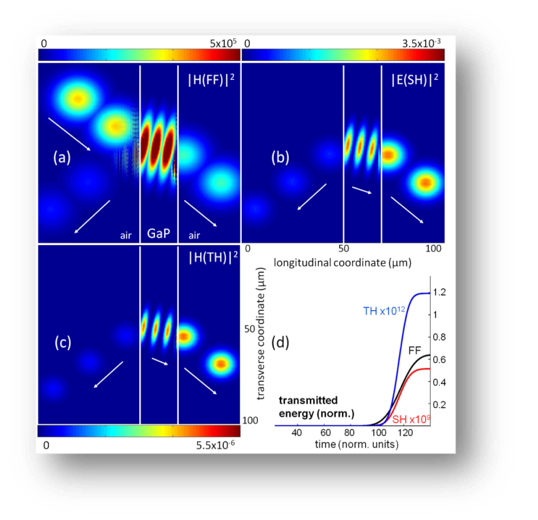Phase-locked harmonic generation

It is well known that the solution of the Maxwell’s equations in nonlinear dielectrics is composed of two parts: one resolves the homogeneous set of equations, while the other is a particular solution of the inhomogeneous equations driven by the nonlinear polarization term. For harmonic generation, the homogenous component has traditionally been considered to be the only important constituent since it is the one which can become efficient.
We make a systematic theoretical, numerical and experimental study of the other component of the SH signal, the inhomogeneous one. This component has the peculiarity that travels at the fundamental pulse group velocity of and can be distinguished from the homogeneous component, which refracts and travels according to the values expected from material dispersion at that frequency.
Our study shows that the homogeneous and inhomogeneous components have completely different behaviors and respond to completely different stimulus. In spite if the fact that it has a very low efficiency it may have very interesting applications as it can in an absorptive material.
Involved Researchers: J. Trull, C. Cojocaru, R. Vilaseca.
Former group members: Vito Roppo
Collaborations: Michael Scalora, M.A. Vicenti and Domenico de Ceglia (Charles M. Bowden Research Center, AMRDEC, RDECOM, Redstone Arsenal, Huntsville, Alabama, USA).
Associated projects
Second and third order nonlinear optical phenomena in metal dielectric and plasmonic nanostructures: experimental analysis.
Scientific coordinator: C. Cojocaru .
Funding Agency: RDECOM – US Army .
Participants: J. Trull, R. Vilaseca.
Project ref. No.: W911NF-13-1-0464
Start/Ends dates: 09/2014 - 09/2016 (24 month) .
Share: